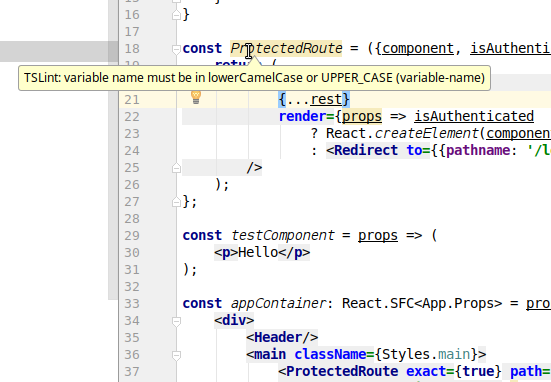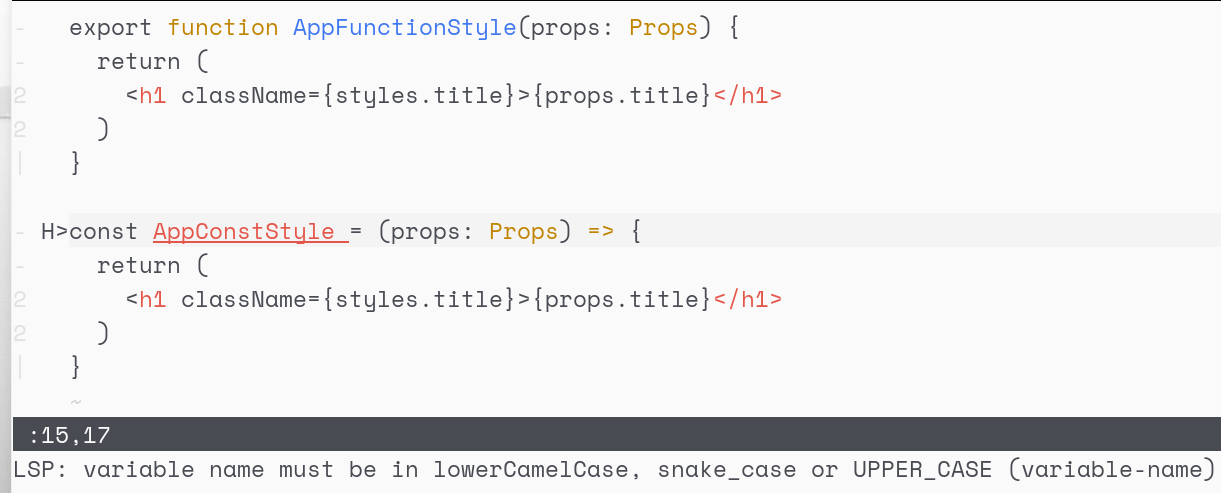Stateless React components should be named in PascalCase, so React can distinguish between native elements and components. Typescripts naming convention dictates that we should use lowerCamelCase or UPPER_CASE for the name of const variables.
How can I satisfy both (React and tslint)?


